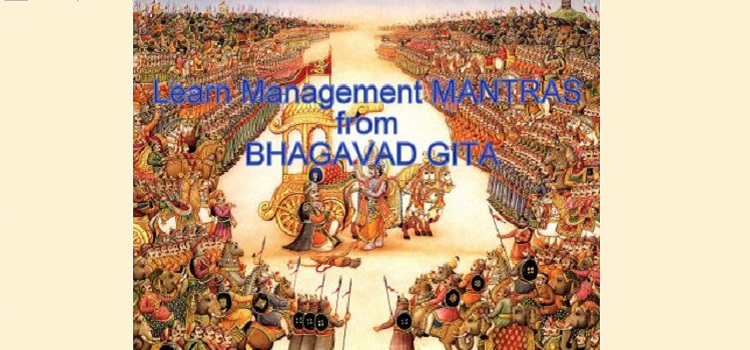Bhagavad Gita has become one of the top books that has impacted the top executives in India and Abroad. In 2006, Business Week published an article with title “How Bhagavad Gita has charmed US corporates” describing how many top executives of different corporations attended the seminars to learn about the Indian philosophy to balance the business ideas of amassing wealth with the desire to live with inner happiness. It says, “Big business is embracing Indian philosophy. Suddenly, phrases from ancient Hindu Texts such as Bhagavad Gita are popping up in management tomes and on websites of consultants.” Almost all the major Business schools in USA have at least ten percent faculty members been of Indian descent. In fact, Dean of Kellogg School says, “When senior executives come to Kellogg, Wharton, Harvard or Dartmouth’s Tuck, they are exposed to Indian values that are reflected in the way we think and articulate.” They are learning to expand their horizon with Indian values, embrace more holistic approach in life and getting motivated a broader outlook than just money.
Many Business Schools have taken the opportunity to turn to Indian philosophical outlook for shaping the future of the upcoming business managers. Bob Miglani of Pfizer says, “I think American executives are also getting exposed to spiritual values which are most often delivered by Indian management professors, in top American business schools. Indian professors such as Srikumar Rao are ideally placed to be the executive coaches of the next generation of Fortune 500 firms because they manage to balance their teachings with an East-West flavor. These academics are very smart and their message comes across so easily…in a warm and fuzzy sort of way.”
Asian Indian academicians are introducing the principles of Bhagavad Gita to the Corporate world. They have coached people on Wall Street and executives at Johnson & Johnson, McDonald’s, United Airlines, Google and Microsoft. Professor Srikumar Rao, author of Happiness at Work, says, “The West is indoctrinated heavily into achieving goals: good grades will get you into a good college which in turn will get you a good job. If you succeed your life is good, otherwise you are doomed. So, everyone is goal-centric and gets set up to face inevitable disappointments,”His course is highly rated for helping people balance the compulsion to amass wealth with the desire for happiness.
In 2013, Debashi Chatterjee felt that Bhagavad Gita would bring back the honesty and integrity so lacking in the modern society. “Bhagavad Gita’ time has come.
It is not a religious manual in as much as a manual of practice… It tells you how to regain your equanimity in a war-like situation.” The importance of learning the intrinsic nature of the human mind to focus with determination, Gita’s perennial philosophy is needed for every dimension of human life including business management. Senior Analyst of Deutsche Bank says, “The Gita is even taught in a course called Leadership, Inspiration, Dilemma and Action and is very relevant to modern managerial dilemmas.”
Bhagavad Gita also became a management mantra that found its way into the curriculum of Indian Institute of Management (IIM) in Indore. Ten different sessions on Bhagavad Gita took the students through the discourses on Raja Yoga and Karma Yoga. The students were imparted many lessons on “how to develop and channelize their spiritual and mental energies to achieve excellence in the field of business management.” The aim of this program was to make students not only good managers, but also responsible corporate citizen.





3 Comments